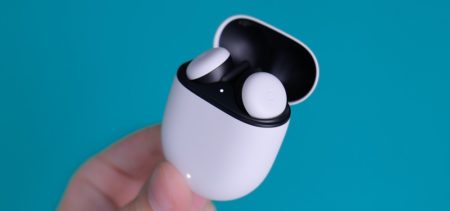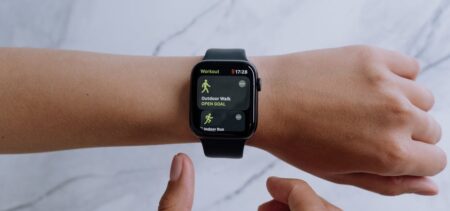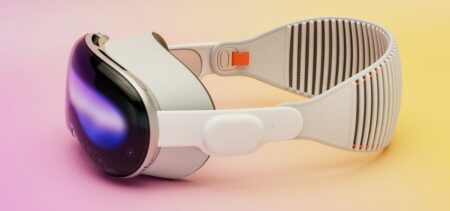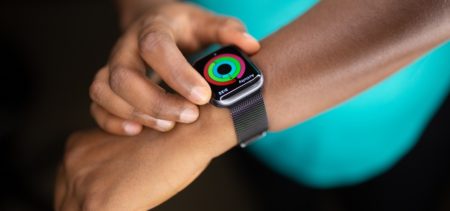A ReadWrite article recently debated what the materialization of nanotechnology in the form of robotic swarms would mean. To what purpose do they serve? How will they influence communications? How would quadcopter swarms be able to coordinate their actions?
The term they employed is “nanoswarms”. So far, this word is specific to science fiction rather than tech research and development. However, science is making tremendous progress nowadays. Turning fiction into reality comes at an amazing pace. Modern prototypes become live demonstrations of various concepts only theorized before.
What does quadcopter nanoswarms stand for?
Technologically, a nanoswarm is “a mass of nanobots or nanotech microbots that acts together as an extended superorganism”. Quadcopters equal a flying mass. Do you wonder where does this definition come from? Well, the answer may bring a smile on some faces. We found this in the Enciclopedia Galactica, a fictional story collection. Fictional or not, a mass of coordinated nanobots forms a nanoswarm.
The reality of such technological developments might be closer than we imagine it. Reseachers’s work is based on detailed studies of bee colonies and the way they function. Even the insects’ physiology counted, in the case of quadcopters. The incipient prototypes of swarm robots or of flying nanovehicles close in on an epochal breakthrough.
On one hand, there are academic papers on how these technologies would work and benefit humanity. On the other hand, we look at the practical/material technological progress that would one day enable the concepts to be put into practice.
Let’s see some examples.
Research involving swarms of nanobots
One of the main directions of research on nanobots and their capability of functioning in intelligent swarms consists in medical technologies. These would use nanobots for exploratory or therapeutic interventions inside the human body.
Examples include the research carried out by by teams from Polytechnique Montréal, Université de Montréal and McGill University under the leadership of Professor Sylvain Martel. They explored how nanobots are able to precisely deliver cancer-fighting drugs straight into the affected cells. You may see here the 2016 breakthrough this project announced.
In what exploratory interventions are concerned, swarms of nanobots are advanced as a solution for in vivo diagnosis of endogenous disease. Their ability to embed sophisticated functions, like navigation, recognition, and data transmission is extremely helpful. However, the nanobots’ very narrow computational resources and their locally bound interactions are seen as inherent limitations. Nanobots, according to this source, can presently communicate between them only through physical interactions. This obstacle will perhaps disappear in the nearby future, if wireless communications will be added to these tiny structures.
Prototyping the nanobots of the future
An even more futuristic study revealed people can control DNA-based nanobots with their brain power. The experiment triggered the precise time when nanobots would drop off their medication cargo inside living organisms. So far, the team demonstrated the viability of this concept. By injecting nanobots into cockroaches, then coordinating the drug release with the state of increased mental activity in the human subjects, the researchers triggered responses from the nanobots.
It all proved a success. The major purpose was of establishing a mechanism of medicating certain patients in the right moments. For example, the drug cargo enters the cells just before a crisis. The increased mental activity of a certain kind would make the already-present nanobots release their charge. Thus the nanobots would prevent the unpleasant illness-related outcome.
Quadcopters, or flying nanobots
Another materialization of the nanobot swarms in the online media resides in the micro-robotic technology. The Defense Department employs such technology. Their researchers tested the quadcopters’ ability to fly in groups. Miniaturized drones (autonomous quadrotors, controlled by algorithms), acting as smart gadgets, are capable of executing commands. They also coordinate their actions. The research showcased a functional cutting-edge technology. More skeptical voices already wonder whether these MAVs (micro air vehicles) will be used for good. Do they risk being employed against humans in unacceptable ways, or even getting out of control someday?
More precisely, on September 1 2016, a nine-month prototype project debuted inside the Shield AI Company. The Naval Special Warfare Command and the Defense Innovation Unit Experimental, or DIUX, (the Pentagon’s Silicon Valley outreach office) founded this project. It represents a push for GPS-independent drones. This DefenseOne article that reviews the DARPA-enabled future of autonomous tactical drones also lists the major steps in this direction since 2014.
Bio-inspired quadcopters have quite a bit of a past. They started with 2010’s “8-gram, 20-centimeter wide” micro drone realized in Taiwan. Currently we have the current concepts of artificial MAV swarms. These display group behavior, become increasingly intelligent and be able to perform more sophisticated commands.
Controlling nanobots – always a dilemma
The idea of nanobotic swarms can easily scare people. We have all seen one too many science fiction movies where technology gets out of hand and turns against humans. True, any programming error can transform what is glorious cutting-edge technology into a catastrophe. Therefore, tight control means and fail-safe systems should be implemented. Having such features is useful, if only to appease the more precautionary of us.
Of course, making sure such tiny yet prolific devices would not go astray and act on their own IT errors means solving just part of the problem. But at least it is a step in the right direction. Once human control is indispensable for such technologies to be active, it is nevertheless possible for the malicious humans to take control in a disaster scenario. It is better that the layers of safety between futuristic, progressive technology and apocalyptic scenarios should remain as many as possible.
As a control system example, the Georgia Institute of Technology, which features a prominent research nucleus in what nanobots are concerned, demoed in 2015 how a fleet of robots can be controlled by humans with just the swipe of a finger. The swipe makes a beam of light from the tablet change positions, and the nanobots interact in the purpose of following the lit area and positioning themselves to cover it entirely.
As fascinating as they look, nanobots hold both the potential of being life-savers (in medical circumstances), or tiny killing machines. It depends on humans to develop this power, yet harness it for the right purposes.















































